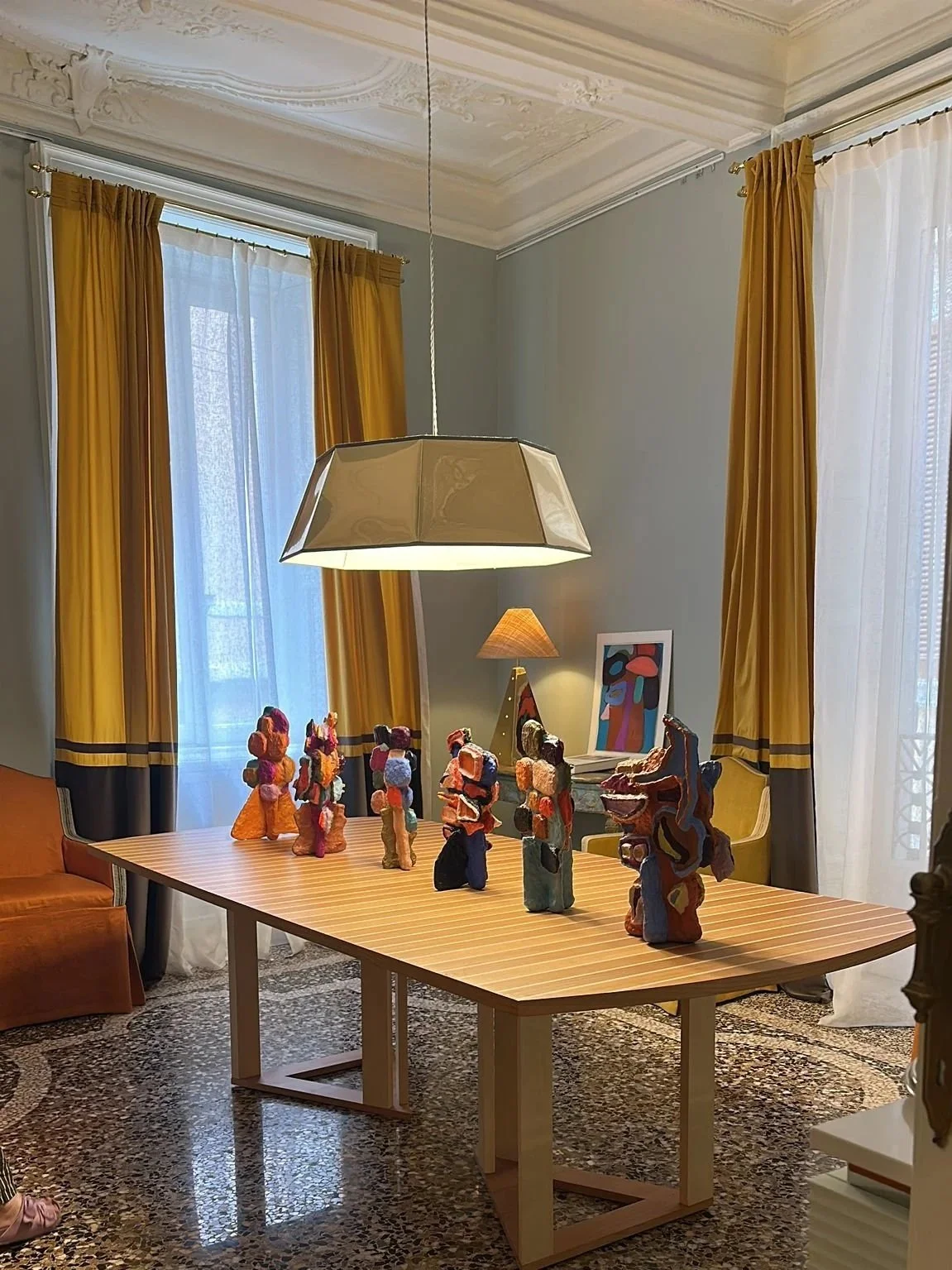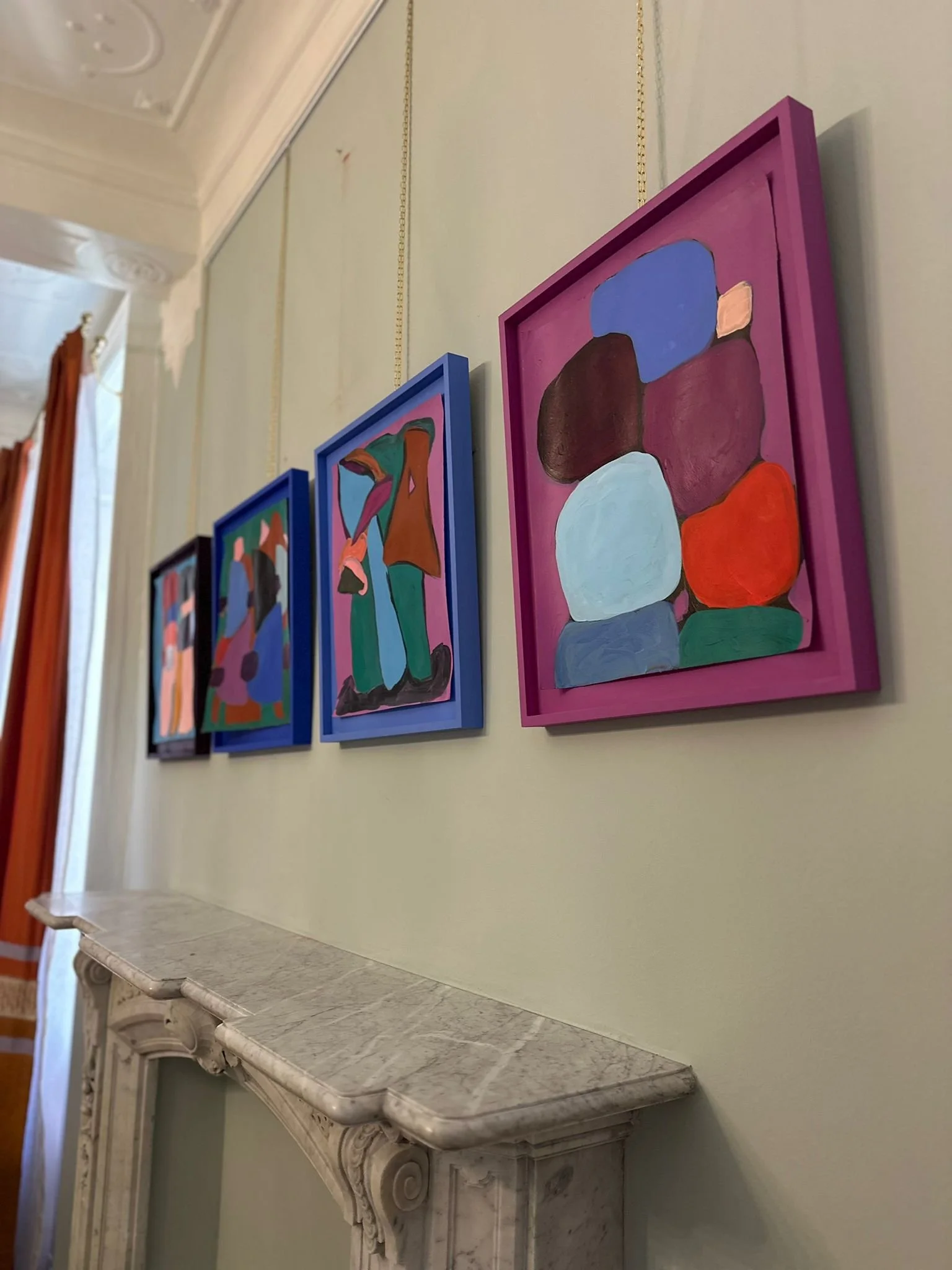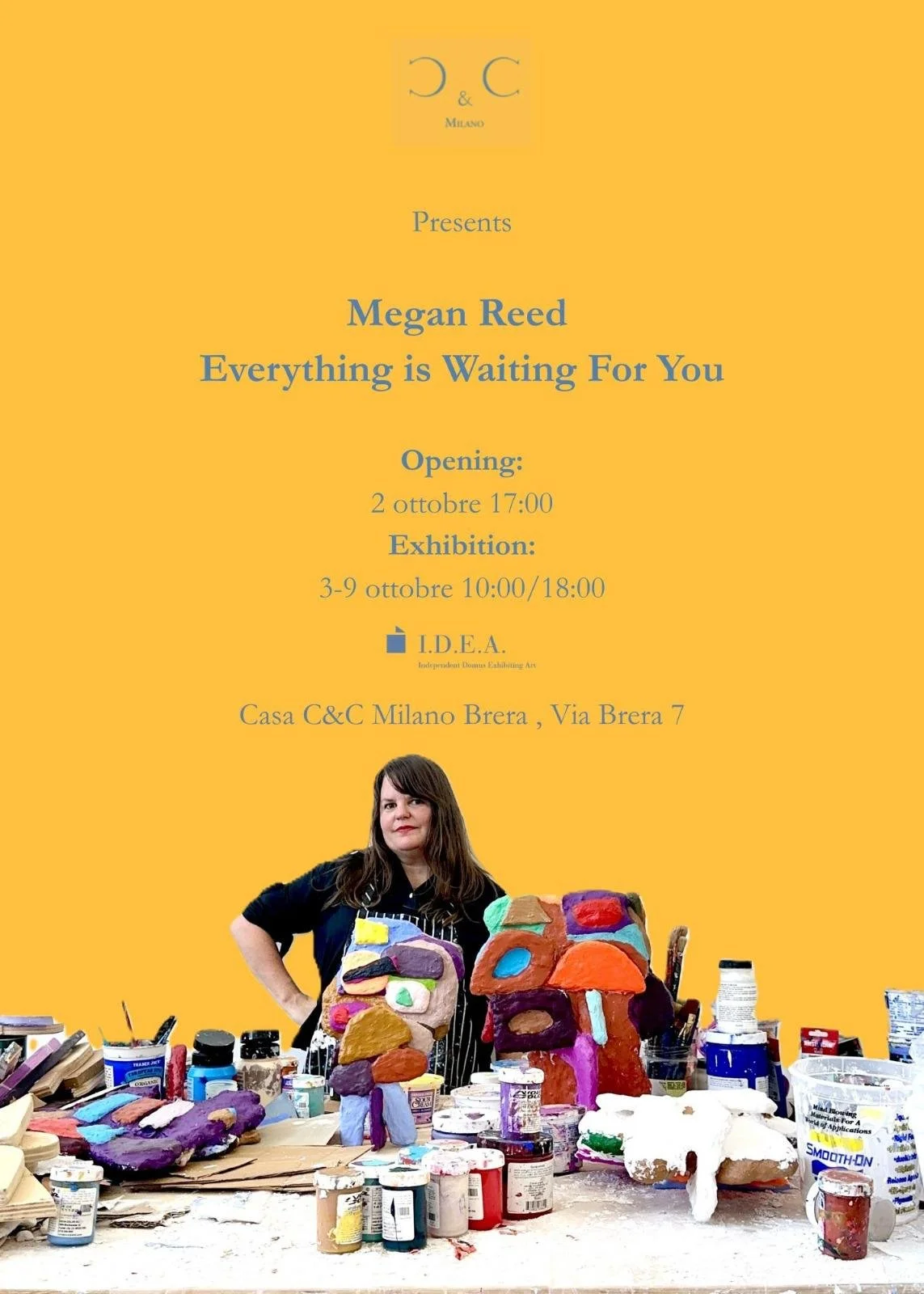Breaking Out of Wall-Jail: Megan Reed at Casa C&C × Cascina I.D.E.A.
Words by Eleonora Sparaciari, from interviews on site by Chiara Castellini.The Expanded Field of Painting
Megan Reed grew up outside San Francisco, studied theatre in New York, and fell for painting in the Met’s galleries mid-degree. Sculpture came later and, crucially, as character: “It’s almost like the performer”. She calls it the expanded field of painting, ”that’s where I work”, she says. A subsequent master’s in English (Illinois) stitched language to image for good; her thesis dug into ekphrasis —the idea of the “speaking picture”.
The work began with a jailbreak: paintings that felt unjustly stuck on the wall were cut up and collaged back together. From those flat fragments, forms started standing—almost as if they were growing a spine of their own, my imagination suggests. The materials chosen began to complement that vision—cardboard (initially sourced from whatever was at hand), plaster gauze, wood, and, for larger pieces, fibreglass.
”The gauze I use is a fabric… in sculpture it actually has a really important function, it holds it up”, Megan tells Chiara, our special correspondent for the day, and no stranger to gauze herself after a stint at the Bavarian State Opera in Munich making masks for the actors.
Reed puts waste to work. She turns packaging (arriving free at our doors and exiting as trash just as fast) into meaning. Cardboard isn’t merely pragmatic; it’s a position: a way to metabolise surplus and reroute it into form. Picasso and Braque reached for cardboard, too, in the early modern era of mass consumption.
Reed is adamant about origins. “I’m not interested in copying life… it’s about making something two-dimensional have three-dimensionality”. Watching the work as she says this, you can see it: sculptures slipping out of the canvases (possibly at night, in my fantasy-seeking brain), irreverent little things striding into the 3D world, unafraid to claim space. Their edges show their seams and confess their making; some stand a little precariously with an admitted assist (think paper-doll logic), so that flatness never really vanishes. They stay true to their 2D beginnings, but they perform. It’s theatre!
Casa C&C, Cascina I.D.E.A. and the Milan Frame
Casa C&C Milano—an apartment-as-showroom for a Milanese heritage textile house—gave Reed’s pieces the opposite of white-cube neutrality: company. Linen, terrazzo floors, and furniture that invites conversation rather than stillness.
The artist names the social architecture plainly: “Galleries are free, but people feel intimidated to go in… it’s nice to see work in a space that’s sort of domestic—you live with it for a minute”. Here, Gigliola Castellini keeps the C&C DNA while opening the door to contemporary art without turning it into décor. Textiles don’t mute the art; they meet it, and looking turns into trying it on. That tempo suits Reed’s objects—you read them first with the body, then with the brain.
The staging came via Cascina I.D.E.A., the non-profit residency that Nicoletta Rusconi founded in 2017. Two artists a year, one to one-and-a-half months, historically shown back at the countryside base in Piedmont. Post-pandemic, audiences thinned on the long drive, so the city became the bridge. Casa C&C—via Nicoletta’s friendship with Gigliola Castellini—offered a domestic frame and a wider public without sacrificing discretion.
Rusconi’s instincts sit under the old banner of her Arte e Impresa project, which sees art and enterprise connected with intention and purpose. (Another interesting project is Artbite, which translates that intention into access: small works by major artists at €300–€3,000) The Casa C&C collaboration continues the same logic: put residency outcomes where people are, keep the curatorial spine straight, let the encounter do the magic.
Speaking of encounters—in a city of fashion and design like Milan, we asked Reed about potential collaborations. She isn’t allergic to crossover. In fact, a fabric-forward host space is a productive nudge: new materials, new contexts. The caution is scope: limited editions make sense, mass production can dissolve the thingness—the one-off allure—of the art object.
To close, we ask Reed what most confuses people about art, and she doesn’t hesitate: price. Value gets read as taste. Her antidote is simple: listen to it like a song. The domestic, non-gallery setting at C&C, for example, encourages this instinctive emotional response. It’s a small but telling blueprint for Milan: art and design sharing air without talking past each other.
Credits: Exhibition at Casa C&C Milano, presented by Cascina I.D.E.A.; artist Megan Reed. Interviews conducted on site by Chiara Castellini for Art Unpacked











